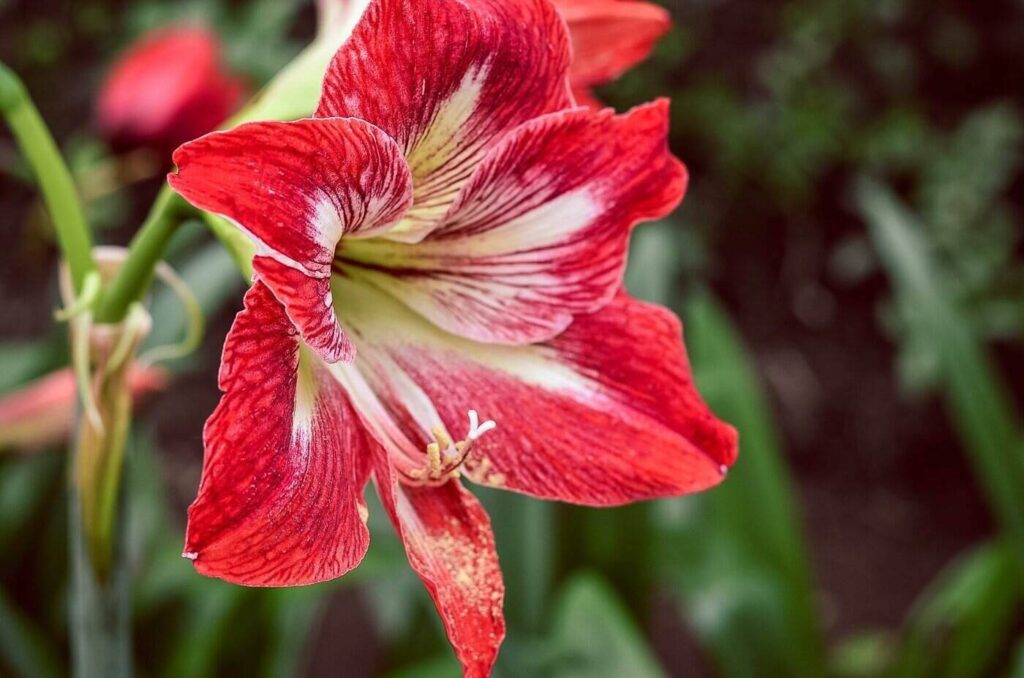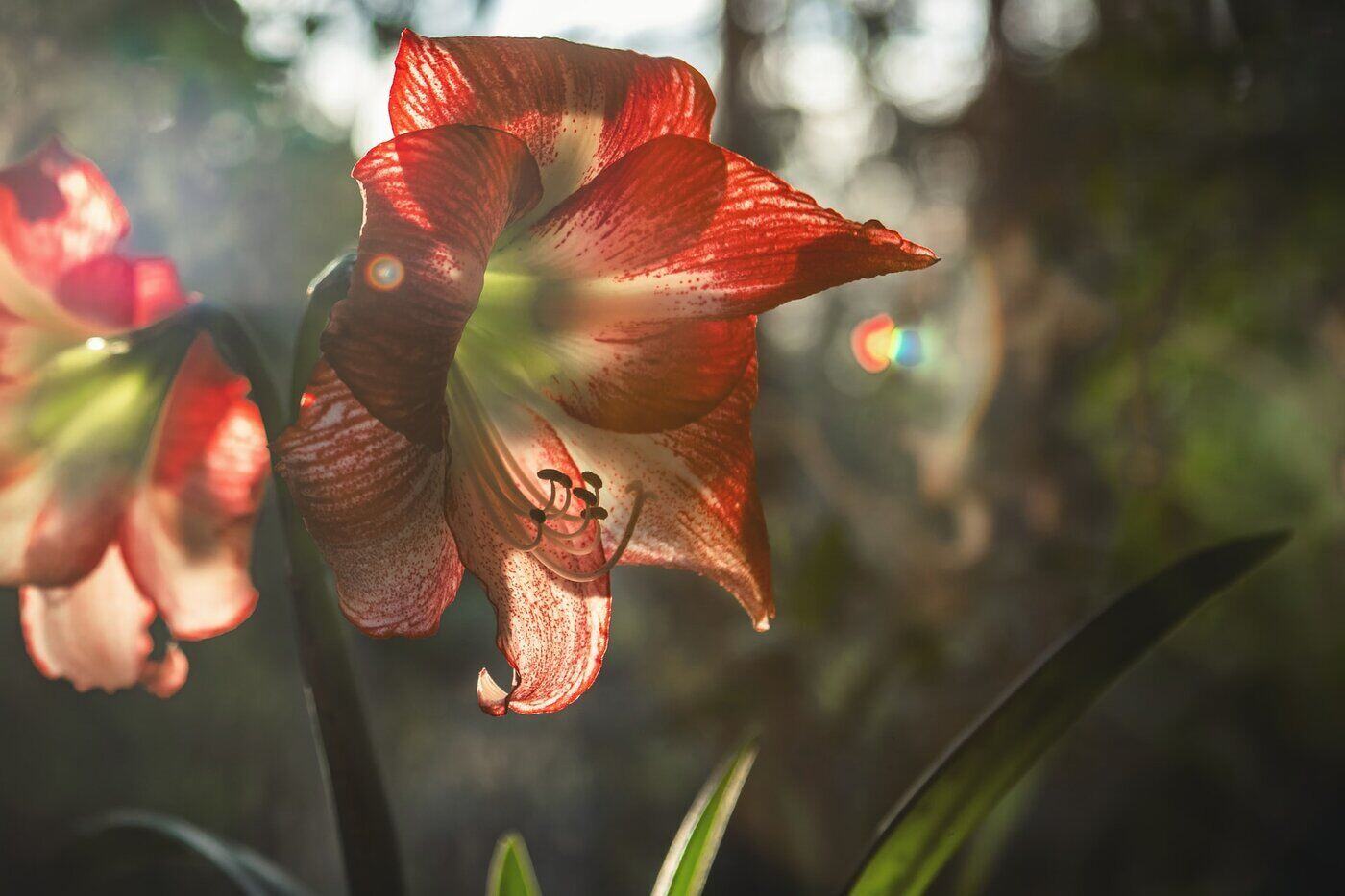There are few flowers as dramatic as the amaryllis. Its bold flowers are extremely large (from 4 to 10 inches wide) with an open, trumpet shape. They can be single or double blooms, set atop graceful stalks that can be over 2 feet tall.
There are over 600 varieties of amaryllis, each with its own distinct beauty. Horticulturalists Mary Meyer and Julie Weisenhorn explain that “the genus Amaryllis comes from the Greek word amarysso, which means ‘to sparkle.’” There’s some controversy over the taxonomy of this flower, but they state that nowadays “most amaryllis are hybrids but are still classified in the genus Hippeastrum.”
Different Colors of Amaryllis
The amaryllis is blessed with a wide array of colors. Red and white are classics, and these are the colors you’re most likely to encounter at the garden centre or even the supermarket.
There’s much more to explore with this beloved gift plant, though—its many shades range from soft and light pink to a dark burgundy to coral and apricot shades. Some varieties are picotee. You can even find more outrageous green hues if you really like to make a statement.
How to Grow Amaryllis

Amaryllis are grown from bulbs (the seeds take years to grow). When grown outdoors these flowers are spring and summer bloomers. They’re only hardy in Zones 8 to 10, though, so they’re largely grown indoors and forced to bloom for the winter holidays.
Growing amaryllis successfully starts with choosing the right bulb. When you’re buying bulbs, choose the biggest ones you can find — larger bulbs mean a larger plant. Inspect them to make sure they’re firm and dry.
If you’re purchasing a pre-potted bulb, make sure it has a flower shoot starting (the shoot of the flower will be thicker than the shoots of the leaves. It will also be pointed). In many varieties, amaryllis flowers sprout before the leaves, so if there are leaves but no flower yet, the plant might not bloom this year. Ask your supplier about the variety you’re considering.
The plant is easy to grow and doesn’t need a large pot to be happy. Choose a pot with drainage holes and a bit of weight to it – you don’t want your amaryllis to tip when the flowers get heavy. Use a light potting mix to plant, keeping the top third of the bulb, pointed end up, above soil level.
Amaryllis likes the light, so put your pot in bright but indirect sunlight. Rotate the pot as the flower stalks grow to keep them straight. Water lightly until you see new growth. After that, regular watering will keep your amaryllis flourishing. You may want to fertilize with a balanced, organic fertilizer, but they typically don’t require it.
As the plant matures, it might need more frequent watering. You might also need to stake the stalks if the flowers become too heavy, but aside from that, it requires little extra care. While the plant is in bloom, move your amaryllis to a cooler spot – that will keep the flowers blooming longer.
Re-Blooming
People have mixed success trying to get their amaryllis plants to bloom year after year, but it’s worth a shot! Cut the flowers off once they’ve died away. Do the same with the stalk. Put your plant outdoors over the summer and water and fertilize it regularly.
You can wait for the leaves to die off in the fall or stop watering to start forcing the plant to go dormant. Once the leaves die off, you can dig up the bulb, remove the dead foliage and keep the bulb in a cool, dark place for 6-8 weeks (avoid freezing it, though). After a solid 6-8 weeks of dormancy, repot. It takes the plant somewhere between 6-10 weeks to bloom, so check your variety so you can time the plants to flower for the holidays.
Arranging Amaryllis
Cut amaryllis flowers are wonderfully long-lasting. With proper care, they can go 2-3 weeks once cut. With their large size, they’ll look best as the star of your arrangement – festive greens can help soften the arrangement if it needs more contour.
However you choose to arrange your blooms, staking the flowers by inserting a cane inside their hollow stems is a must; otherwise, the weight will cause the stems to buckle. Expect the stems to be soft once cut. They’ll hold up better if you place them into your arrangement first and work your other stems around them. You can also wrap or tie something around the base of the stem to keep it stronger.
These plants are incredibly long-lived, lasting 75 years under the right conditions. With good luck and good management, your amaryllis will turn out to have a long, happy life.
Feature image: Tim Mossholder; Image 1: NO NAME
